Feature / Pickup
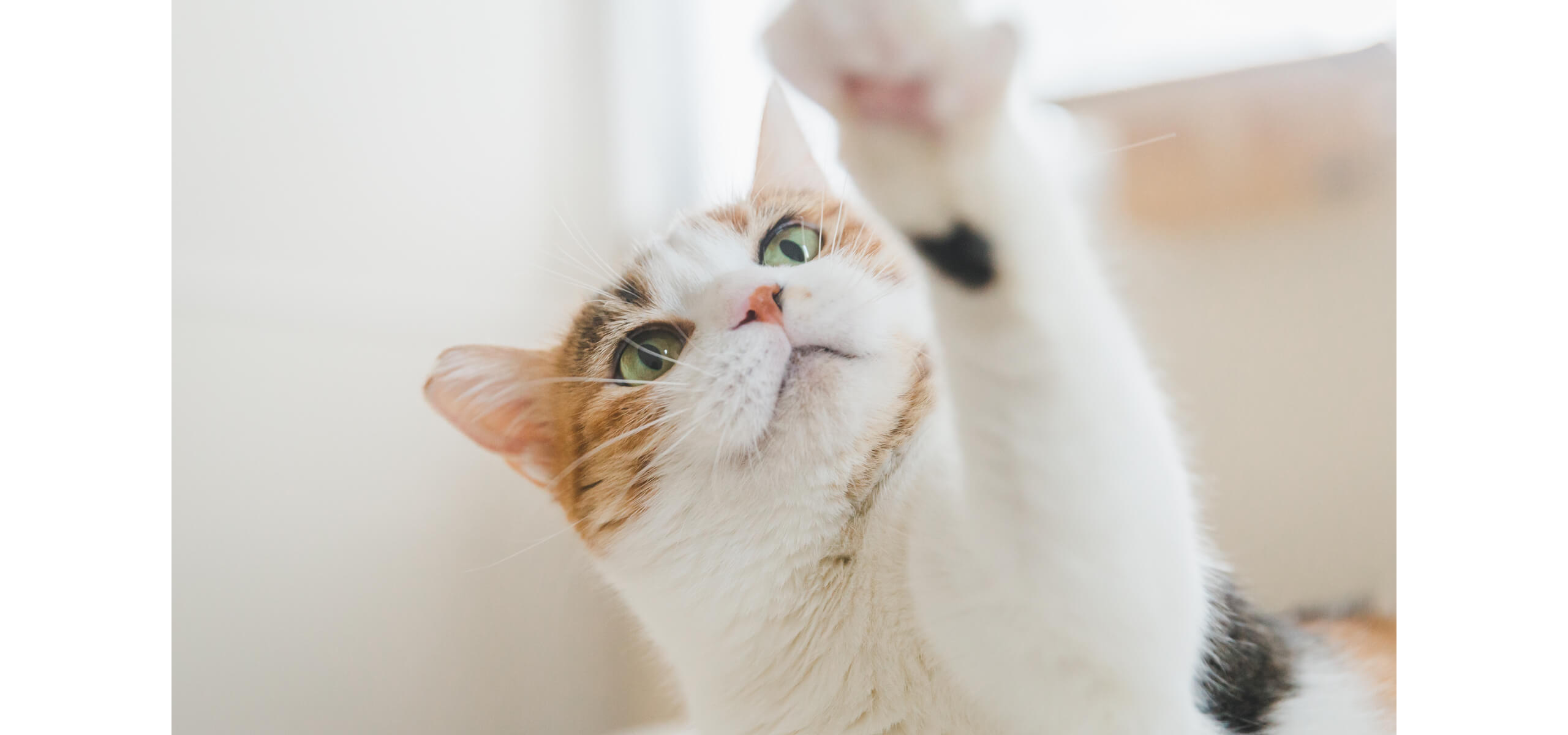
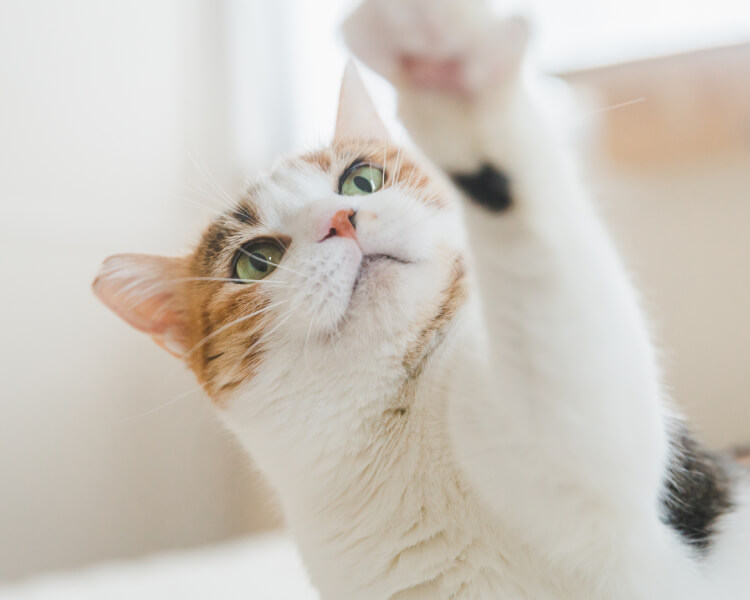
そのためには日常生活をしっかり観察して、変化があったときにすぐに気がついて対処してあげることが鍵になります。下記の項目を参考に、猫が甘えて寄ってきたときに身体をチェックしたり、遊びや毛づくろいの様子などもよく観察したりして、病気の早期発見に役立ててください。(最終更新日2023年1月30日)

- ear health checkpoint
- eye health checkpoint
- oral health checkpoint
- Nose and breath health checkpoints
- physical health checkpoint
- Skin and coat health checkpoints
- Health checkpoints when eating and drinking
- Health checkpoints during excretion
- If you act like this, it's a sign of illness! Cat behavior to watch out for
- Make life with your cat more enjoyable with home health checks
- Frequently Asked Questions
Q&A about poor health of cats
1ear health checkpoint
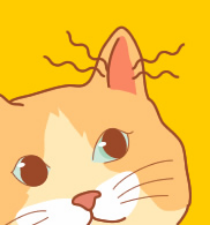
The following points should be checked on a regular basis to maintain the health of the cat's ears. Smell it and peek inside its ears.
<Points to check your health>
・Is there any smell?
・Is there any dirt?
・Is there any damage?
・Are there signs of itching in the ears?
If your cat's ears are healthy, regular cleaning is usually not necessary. However, if it smells, is dirty, or looks itchy, you may already have otitis externa caused by parasites, or an ear disease caused by bacteria or yeast (Malassezia). In particular, cats that go outdoors are often parasitized by ear mites due to contact with other animals, and unneutered male cats often suffer damage to their ears from fights, so be careful.
Ear diseases can also be caused by parasites such as ticks, dermatophytes, skin diseases such as scabies, allergies, and injuries from fights. If left untreated, it can lead to otitis media or inner otitis, which can damage the eardrum, impair hearing, and sometimes develop neurological symptoms, so it is recommended to see a doctor as soon as possible.
If you notice any of the following symptoms, see your veterinarian as soon as possible.
<Symptoms requiring medical examination>
・Foul odor
・Swollen earlobes
・The cat cares about the ears, itches, and hurts
・Shaking head, bleeding from ears ※Urgent
・Deaf ※Urgent
・There is a lot of ear dirt such as black and yellow ※Urgent
・The face is paralyzed and the head is tilted ※Urgent
2eye health checkpoint


The following points should be checked on a regular basis to maintain the health of the cat's eyes. Compare the left and right eyes and check for tears and eye mucus.
<Points to check your health>
・Are your eyes red?
・Is there any eye mucus?
・Is there any tears?
・Are the eyes dry?
・Does it look like itchy eyes?
・Are the sensations of the left and right eyes the same?
・Does your eye hurt badly?
・Can you see?
・Does your eye move strangely?
Conjunctivitis and keratitis can be thought of as diseases that make the eyes red, and contamination with foreign substances such as dust, infection with bacteria and viruses, and trauma are thought to be the causes. Also, if your left and right eyes look different, or your eyes move strangely, you may have some disease.
In addition, red eyes may be one of the symptoms of feline infectious rhinotracheitis, feline calicivirus infection, feline chlamydia infection, etc. In particular, kittens with feline infectious rhinotracheitis or feline calicivirus infection are at high risk of mortality. Watch out for complex symptoms, avoid contact with other animals, and see a veterinarian. In addition, these can be prevented by inoculating a combination vaccine, so it is safe to get vaccinated once a year.
If you notice any of the following symptoms, see your veterinarian as soon as possible.
<Symptoms requiring medical examination>
・Red eyes with bloodshot eyes
・Scratching or rubbing your eyes
・A lot of eye mucus
・Lots of tears
・There is a foreign object in the eye
・Red eyes, runny nose, and sneezing (avoid contact with other animals and go to the animal hospital)
- Left and right eyes are different sizes
No change in pupil size
・Left and right eye colors are different (except for odd eyes)
・Weird eye movements
3oral health checkpoint
What should I check on a regular basis to maintain the health of my cat's mouth? Here, we will explain three checkpoints: checkpoints for smell and tartar, checkpoints for drooling, and checkpoints for gums and tongue.
Checkpoints for odor and tartar


What points should be checked to maintain health regarding the odor and tartar in the cat's mouth? In particular, the following points should be checked.
<Points to check your health>
・Does it smell?
・Do you have plaque on your teeth?
・Are your gums red?
・Will you let me touch your mouth?
If you have bad breath, check your mouth carefully. If your gums are red, you have mouth ulcers. Stomatitis in cats may be infected with feline immunodeficiency virus, feline leukemia virus, feline calicivirus, etc., so please do not think about it easily and see a doctor. In addition, there are many elderly cats who develop stomatitis and periodontal disease due to the adhesion of tartar, can not eat due to pain, drool, etc., so caution is required. Also, if your cat won't let you touch its mouth, it may have some pain in its mouth.
Also, if you get used to brushing your teeth from the time you are a kitten, you can prevent tartar from sticking to some extent. However, if your cat is already old and has a lot of tartar on its teeth, it is recommended to have it removed by a veterinarian. In addition, cats with chronic gingivostomatitis, cervical resorption lesions, and other extremely painful diseases may become unable to eat and become weakened, so it is important to observe their eating habits on a daily basis. important.
If you notice any of the following symptoms, see your veterinarian as soon as possible.
<Symptoms requiring medical examination>
- Unpleasant odor from the mouth
- Bad breath and tartar buildup
Red gums
-Bleeding in the mouth
・A strange odor from the mouth and excessive drinking and urination *Urgent
drooling checkpoint
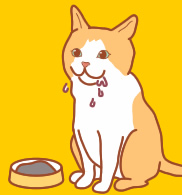

When a cat drools, what points should be checked to maintain its health? In particular, the following points should be checked.
<Points to check your health>
・Are you drooling?
・Are you eating normally?
The secretion of saliva is activated by the smell of food, etc., but it also flows out when pain is caused by stomatitis, glossitis, trauma, tonsils, tumors, etc. Cats are especially prone to mouth ulcers, so check their mouths when they are drooling. In addition, since cats have rough protrusions on their tongues, as they play with thread-like objects, they advance steadily toward the throat, get entangled in the base of the tongue, and then swallow the other side, resulting in an intestinal obstruction requiring surgery. There are cases where Drooling may also occur in such cases. Also, if you have convulsions, you may have organophosphate poisoning.
Also, some cats may drool when given drugs orally, when they lick something that tastes bad, or when they are extremely nervous. Also, you should not think about it lightly, as saliva is produced normally but cannot be swallowed, or drooling may occur due to disorders such as esophageal infarction or pharyngeal paralysis.
If you notice any of the following symptoms, see your veterinarian as soon as possible.
<Symptoms requiring medical examination>
・Blood in drool
・Scratching around the mouth more than usual
Red or swollen mouth
・I can't eat even though I'm drooling *Urgent
・A thread-like object is entangled in the tongue and swallowed *Urgent
・ Drooling and convulsions *Urgent
Gums and tongue checkpoints
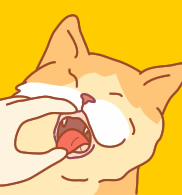

In order to maintain the health of your cat's gums and tongue, make sure to regularly check whether the color of the gums and tongue is normal.
The tongue, gums, and lips correspond to the mucous membrane, and the color of the mucous membrane can also be seen in the conjunctiva of the eye. If the mucous membrane is pale, there is a possibility of cyanosis that interferes with blood circulation, and breathing and heart problems are also considered, which is a serious condition. If the mucous membrane is yellowish, it may be jaundice. If your gums are whitish, you may have anemia.
Some cats may drool when given drugs orally, when they lick something with a bad taste, or when they are extremely nervous. Also, even though saliva is produced normally, drooling may occur when swallowing is not possible or due to disorders such as esophageal infarction or pharyngeal paralysis, so don't think about it lightly.
If you notice any of the following symptoms, see your veterinarian as soon as possible.
<Symptoms requiring medical examination>
・Easy to get tired and whitish gums
・Pale mucous membranes (tongue, gums, lips, etc.)
・The mucous membrane is pale and unconscious ※Urgent
・In an accident, the mucous membrane is pale *Urgent
・Yellow mucous membrane *Urgent
4Nose and breath health checkpoints
What should I check on a regular basis to maintain the health of my cat's nose and breath? Here, we will explain two checkpoints for sneezing, runny nose, and panting.
Check points for sneezing and runny nose
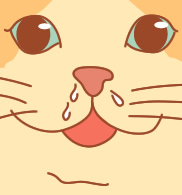

When a cat is sneezing or has a runny nose, what points should be checked to maintain its health? In particular, the following points should be checked.
<Points to check your health>
・Do you have a runny nose?
・Are you sneezing?
・Are you coughing?
・Do you have a fever?
・Is the nose deformed?
If it's a one-time sneeze and you're fine and have an appetite, just keep an eye on it. However, repeated sneezing and a runny nose can indicate a variety of illnesses, including infectious diseases, respiratory problems, allergies, nasal foreign bodies, tumors, and dental problems. Also, if you have a cough, bronchitis, lung disease, intrathoracic disease (pleural effusion, diaphragmatic disease), heart disease, etc. are suspected.
Also, when a cat gets infectious respiratory syndrome, symptoms similar to a human cold, such as fever, runny nose, sneezing, eye mucus, and red eyes, appear. Half of this disease is caused by feline infectious rhinotracheitis and feline calicivirus infection. If you have a lot of runny noses, you won't be able to smell the food, and that alone can cause a loss of appetite. These diseases can be prevented by inoculating the combined vaccine, although they may be life-threatening if they worsen.
If you notice any of the following symptoms, see your veterinarian as soon as possible.
<Symptoms requiring medical examination>
・Repeated sneezing
・The runny nose is colored and sticky
-Blood in the runny nose
-Frequent coughing
・Sneezing or runny nose and fever
・The nose is deformed
-Coughing, sneezing, runny nose
・I have a runny nose and have difficulty breathing *Urgent
・Sneezing or runny nose, loss of appetite ※Urgent
・Sneezing or runny nose, unable to rehydrate *Urgent
Checkpoints when cats pant
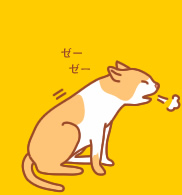

When a cat pants, what points should be checked to maintain its health? In particular, the following points should be checked.
<Points to check your health>
・Are you panting with your mouth open?
・Are you breathing with a wheezing sound?
・Are you having trouble breathing?
It's good if your cat's gasping subsides quickly, but if it persists, it could be a disease of the nose, larynx, trachea, lungs, chest cavity, or heart. It may also be caused by fever, anemia, heatstroke, injury, etc. In the case of heatstroke, immediate measures are necessary. If you have trouble breathing without any noticeable knots, the color of your tongue or lips is strange, or you hear a wheezing sound, you may have some kind of illness. increase.
Cats can also get heat stroke if they stay in a hot place for a long time. First, cool down your pet and take him/her to a veterinary hospital as soon as possible. Also, if you are breathing with your mouth wide open, or if you are sitting and breathing with your chest moving greatly, you may have pulmonary edema, pleural effusion, empyema, hemothorax, pneumothorax, diaphragmatic hernia, tumor, etc. . Cats can also suffer from asthma, which is characterized by wheezing breathing, and this disease is more common in Siamese cats.
If you notice any of the following symptoms, see your veterinarian as soon as possible.
<Symptoms requiring medical examination>
・Unusual movement of the mouth, nose, chest and abdomen
・Continued shortness of breath
・The color of the mouth and lips is not pink, which is strange.
・Breathing with a wheezing sound
・Open your mouth wide and breathe painfully *Urgent
・In a sitting position, move your chest widely and breathe painfully *Urgent
Accompanied by shivering, drooling, vomiting, etc.
・Even if you cool your body, you will still be out of breath ※Urgent
・I am exhausted due to dehydration ※Urgent
5physical health checkpoint
What should I check on a regular basis to keep my cat healthy? Here, we will explain four checkpoints: checkpoints for the stomach, checkpoints for the mammary glands, checkpoints for the presence or absence of injuries, and checkpoints for obesity and overweight.
stomach checkpoint


It is important to check if the cat's stomach is swollen by gently stroking the entire body on a regular basis.
Cats basically eat what they need, so if your tummy is swollen, there may be something wrong. In addition to diseases in which organs in the abdomen become enlarged, increased ascites and peritonitis due to heart disease and liver disease are also suspected. Some cats develop megacolon due to severe constipation, and some cats have urinary stones, so check for any abnormalities in bowel movements and urination. Fatty liver is another common disease in cats. If you have a swollen stomach, you may have an enlarged liver, so don't take it lightly. Pregnancy is also a possibility in unspoiled females.
Cats also have a disease called infectious peritonitis, which causes ascites to build up. Unfortunately, there is currently no definitive cure. Also, unspaited female cats may have stomach swelling due to diseases such as uterine empyema. In addition, the whole body may be swollen. Also, recently there seems to be a type of cat that overeats. Overeating leads to obesity and fat accumulation. Even if it's not an immediate problem, it can lead to a variety of ailments, such as diabetes and joint disease. You need to be very careful because you may overlook another disease that causes swelling in your stomach, thinking it is just obesity.
If you notice any of the following symptoms, see your veterinarian as soon as possible.
<Symptoms requiring medical examination>
・ Overall swelling of the abdomen is large
-A part of the abdomen protrudes
・Difficult to excrete
・Suddenly inflated in a short time ※Urgent
mammary gland checkpoint
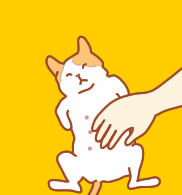

What points should I check on a regular basis to maintain the health of my cat's mammary glands? In particular, the following points should be checked.
<Points to check your health>
・Are there any lumps?
・Is your breast swollen?
As cats reach middle age, the incidence of skin tumors increases. Skin tumors can be benign or malignant, so if you feel a lump, you should see a veterinarian for an examination. Females who are not spayed in particular have a higher incidence of mammary tumors. Mammary gland tumors in cats are highly likely to be malignant (approximately 90%), so early detection and early treatment are necessary.
In female cats, it is normal for the mammary glands to swell before giving birth or during lactation. However, persistent swelling after weaning, or swelling in the mammary glands in unmated, spayed, or male puppies may indicate tumor formation. Tumors that tend to occur on the skin or under the skin of cats include squamous cell carcinoma and fibrosarcoma.
If you notice any of the following symptoms, see your veterinarian as soon as possible.
<Symptoms requiring medical examination>
・There is a lump
・Mammary glands are swollen ※Urgent
・There is a lump in the mammary gland *Urgent
・Bleeding from a lump *Urgent
・It hurts when you touch the mammary gland *Urgent
Check points for injuries, etc.
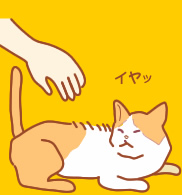

What points should I check to make sure my cat is not injured? In particular, the following points should be checked.
<Points to check your health>
・Are you reluctant to touch it?
・Whether you touch any part of your body, does it react in the same way?
・Will you let me touch your body?
・Are you curled up and not sitting still all the time?
If the person is usually fine to touch, but if one day he or she suddenly shows an unusual reaction such as running away, getting angry, or reluctant to touch the area, then there may be pain in that area. First, make sure there are no injuries or swelling. Even if you can't see it, bruises, fractures, dislocations, arthritis, and diseases of internal organs are suspected. In particular, if you often curl your back and sit still, there is a high possibility that you have pain in your spine or abdominal cavity.
Cats that go out, especially unneutered males, often fight, often forming subcutaneous abscesses, causing local swelling and pain, and if left unnoticed, the skin will break. There may be pus. In addition, there are many accidents such as traffic accidents and falls, and fights increase the risk of infection with feline immunodeficiency virus (commonly called feline AIDS). If you have pain in your body, you may stay still and not move and approach other people, or you may be restless and wander about because of the pain. When the pain is severe, it may resist or raise its voice when you pick it up, so it is important to carefully monitor its physical condition and appetite if it reacts differently than usual.
If you notice any of the following symptoms, see your veterinarian as soon as possible.
<Symptoms requiring medical examination>
・I don't feel well, have no appetite, and look different than usual
- Reluctant to touch the body
- Dislikes touching certain areas
・Protect the stomach and do not touch it
・Always hunched over and sitting still
- Covering the stomach, frequent vomiting *Urgent
・Frequently use the posture of excretion *Urgent
Check points for obesity and overweight
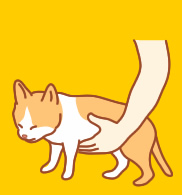

What points should I check to see if my cat is overweight or underweight? In particular, the following points should be checked.
<Points to check your health>
・Do you know rib bones?
・Is the bone rough and you can't feel the meat?
If the cat's chest is too fleshy and you can't tell without looking for the ribs (ribs), or if the spine is hard to feel, the cat is obese. On the other hand, if the bones are rough and you can't feel the meat, it's too thin. Neither is a disease per se, but obesity predisposes people to diseases such as diabetes, respiratory and cardiovascular disease, liver disease, and spinal and joint disorders. Even if your pet looks fat, it is not obesity and there are diseases where the whole body swells. In some cases, the cause of weight loss is not being given enough food, but in many cases, pathological causes are conceivable. Furthermore, sudden weight loss or weight gain can also be a sign of some kind of disease.
Be sure to measure your weight regularly and be careful not to be overweight or overweight. There are individual differences in the ideal weight of cats of the same breed. If possible, check the ideal weight of the cat at a veterinary hospital, and if the cat is obese, adjust the calorie intake and calorie consumption to approach it. Contraception and neutering can easily lead to obesity, so be careful. Also, if you are thin, it is important to have it checked for any pathological causes. Especially in elderly cats, attention should be paid to hyperthyroidism, diabetes, chronic renal failure, stomatitis, etc.
If you notice any of the following symptoms, see your veterinarian as soon as possible.
<Symptoms requiring medical examination>
・Thin and coughing
・I am thin and have no appetite
・Thin and excessive drinking and urinating
Being thin and having vomiting or diarrhea
・Those who are fat and unhealthy
・Being fat and swollen
-Sudden weight gain
・Sudden weight loss
6Skin and coat health checkpoints
What should I check on a regular basis to keep my dog's skin and coat healthy? Here, we will explain three checkpoints: checkpoints for itching, checkpoints for grooming, and checkpoints for skin color.
Checkpoints when itching
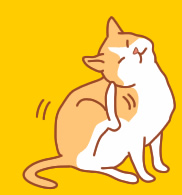

What points should I check to see if my cat is itchy? In particular, the following points should be checked.
<Points to check your health>
・Are you scratching your ears or body?
・Is there something like black sesame on the hair?
・Are there no fleas or ticks?
・Are there any scratches?
・Are you licking only the same part of your body?
・Is there body odor?
・Do you have dandruff?
・Do you have eczema?
・Is the skin red?
If your cat makes a lot of itchy gestures, such as scratching, licking, biting, or rubbing against the floor or walls, it could indicate an infection with external parasites such as fleas or ticks. If you open the bristles and see what looks like black sesame seeds, it could be flea droppings. Flea infections can also cause flea allergy dermatitis. And when a flea infects a cat, it can cause itching and licking, which can lead to hair loss, when the cat develops pimples that look like miliary grains along the back of the cat's neck and lower back. If you have a lot of black ear wax, it could be otitis externa caused by ear mites. In addition, there are skin diseases accompanied by severe itching, such as mites called scabies, bacterial and fungal infections, and allergies.
Ectoparasites can be prevented by using pre-existing drugs. However, if it is already infected, it may cause dermatitis and require treatment. In addition, cats have other diseases such as eosinophilic granuloma syndrome and miliary dermatitis, which are thought to be caused by allergies. Therefore, if you feel any abnormality, please consult a veterinarian. Fleas, ticks, scabies, and fungi can also infect humans, so it is necessary to take measures as early as possible.
If you notice any of the following symptoms, see your veterinarian as soon as possible.
<Symptoms requiring medical examination>
-red spots on the skin
・I have eczema
- Frequent grooming in the same place
・ Frequent scratching
Infested with fleas and ticks
・The scratch is suppurated and has a foul odor
・Hair loss at the scratched area
grooming checkpoints
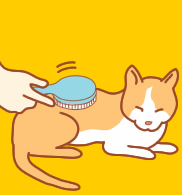

What points should I check to see if my cat is grooming? In particular, the following points should be checked.
<Points to check your health>
・Do you have bad hair?
・Are there any tangles or pills?
Cats usually use their hands or mouth to groom themselves. Grooming removes dirt from the coat and helps keep it clean by brushing the coat with its rough tongue. However, if the coat is poorly groomed, has a lot of hairballs, or has a dirty face, it is likely that the grooming is not done properly. Grooming is a barometer of a cat's health. If it doesn't seem to be grooming, it may be in poor health, so be careful. As a cause of not being able to groom, the possibility of abnormalities in the mouth, such as stomatitis, is also considered. In addition, if you use a new shampoo, etc., and the hair becomes dull, it is possible that the product does not suit your cat's coat.
Cats basically groom themselves, but it is recommended that the owner make a habit of brushing them as a communication and health check. By getting used to brushing from the time you are a kitten, shampooing will be relatively smooth. Long-haired breeds are especially prone to pilling, and when it gets worse, it pulls the skin, and it may hurt every time you move. In this case, brushing cannot be done first, so it is very important for the owner to brush on a daily basis. Furthermore, it can be said that cats accustomed to being brushed and touched by humans can detect physical abnormalities at an early stage.
If you notice any of the following symptoms, see your veterinarian as soon as possible.
<Symptoms requiring medical examination>
- Do not groom yourself
・A foul odor from the mouth
・Strong body odor
- Bad breath and tartar buildup
Red gums
-Bleeding in the mouth
・A strange odor from the mouth and excessive drinking and urination *Urgent
skin color checkpoint
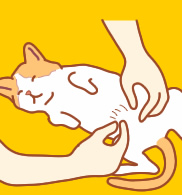

What points should I check to see if my cat's skin color is normal? In particular, the following points should be checked.
<Points to check your health>
・Is the skin color not yellowish?
・Is the skin color not purplish?
If there is a bluish or reddish purple color to the cat's skin, it is likely that the cat is bleeding under the skin. In addition to cases where the color changes due to bruises such as accidents, there is also the possibility of blood clotting abnormalities in rare cases. Also, if your skin looks yellow, make sure the whites of your eyes and gums are not yellowish. If it looks yellow, you may have jaundice.
Cats often develop fatty liver (hepatic lipidosis), so if jaundice is suspected, see a doctor as soon as possible, even if the symptoms seem mild. Since jaundice is a progressive disease, early treatment is recommended. In addition, since purpura can be a life-threatening disease, prompt diagnosis and treatment are necessary.
If you notice any of the following symptoms, see your veterinarian as soon as possible.
<Symptoms requiring medical examination>
・The skin is yellowish *Urgent
・The skin is bluish purple or reddish purple *Urgent
・The whites of the eyes and gums are yellowish ※Urgent
7Health checkpoints when eating and drinking
What should I check on a regular basis to maintain my cat's health when eating and drinking? Here, I will explain three checkpoints: the checkpoint for appetite, the checkpoint for excessive drinking, and the checkpoint for vomiting.
Appetite checkpoint
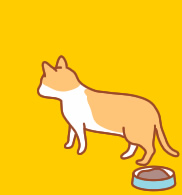

Appetite is a barometer of health. So if your cat doesn't eat at all, it could be sick. If so, keep an eye out for other symptoms. If you can't put food in your mouth but just smell it, you may have stomatitis, a disease that makes you feel pain when you open your mouth, toothache, or a tumor. If the mouth is sore and drooling, other than oral abnormalities, diseases of the nose and throat, feline calicivirus infection, feline infectious rhinotracheitis, etc. can be considered. If you don't have an appetite after coming back from outside, it could mean a traumatic injury, such as a broken lower jaw in a car accident, or an infection.
For example, an abrupt change in diet may cause your cat's appetite to decrease. Many cats choose to be hungry rather than eat food they don't like. However, if you continue to fast for more than 3 days, it may cause diseases such as fatty liver, so you should not fast for more than 3 days for any reason. If your dog does not eat even though he is fine, you need to take into account his palatability and try to mix in the food he has been eating.
If you notice any of the following symptoms, see your veterinarian as soon as possible.
<Symptoms requiring medical examination>
・Not feeling well and not eating at all
・There are days when you don't eat at all even though you haven't changed your food
・I don't eat even though I look like I want to eat
・Kittens or elderly cats that do not eat
・No appetite, diarrhea, vomiting, cough, constipation, etc. ※Urgent
Checkpoints when binge drinking
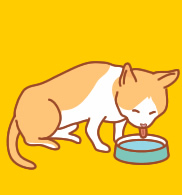

Cats don't drink as much water as dogs do, but if you see them at water fountains more often, they may be drinking more water. If you drink a lot, the amount of urine may also increase, so check the amount of water you drink and the amount of urine in the toilet for a day. If both amounts are increased, diabetes, renal failure, liver failure, uterine empyema, hyperthyroidism, etc. may be considered. Cats, in particular, are prone to declining kidney function as they age. The initial symptoms are polydipsia and polyuria, and as it progresses, hair becomes dull and weight loss occurs. Chronic renal failure does not improve, but early detection of polydipsia and polyuria can lead to long-term maintenance of daily life.
If possible, decide how much water to give, and see how much water you're drinking each day. If your cat drinks about 100ml of water per kilogram of body weight each day, it is a heavy drinker. However, it is important to keep water available at all times to prevent dehydration. In addition to the kidney dysfunction mentioned above, hyperthyroidism is a disease seen in older cats. In addition to polydipsia and polyuria, symptoms include being active for an old age, being thin despite having an appetite, and glaring eyes. Because they have an appetite and are active, it is a troublesome disease that often goes unnoticed.
If you notice any of the following symptoms, see your veterinarian as soon as possible.
<Symptoms requiring medical examination>
- Excessive drinking and decreased appetite
- Heavy drinking and vomiting *Urgent
- Excessive drinking and hair loss
- Excessive drinking and pale urine
- Excessive drinking and swollen abdomen
・I am suffering from dehydration
Checkpoints when throwing up
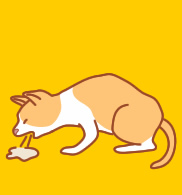

Shedding cats groom themselves frequently and swallow a lot of fur. It becomes a hair ball in the stomach and may be vomited, but this is not a disease. In addition, it is possible to vomit cylindrical dry food immediately after eating dry food vigorously, but if you start eating vomit again and there are no other symptoms, there is no problem. However, if you vomit anything other than hairballs and have other symptoms, you need to be careful. Disorders of the esophagus (ejection), diseases of the digestive system, kidneys and urinary systems, and infections if the combined vaccine has not been administered are also possible. Intestinal obstruction due to accidental ingestion of a foreign object is also a common disease. In this case, immediate surgical excision is required. Vomiting is a common symptom of any illness, so if it persists, a veterinary visit is essential.
Keep an eye on your cat, as it may not be a major problem if the symptoms are transient after vomiting and there is an appetite. When visiting a veterinarian, it is important to properly communicate the time of vomiting, the relationship with meals, the number of times, the content of vomiting, the condition of your cat, and the presence or absence of other symptoms. . Also, if you are energetic and have an appetite, but you vomit immediately after eating, or if you continue to vomit stubbornly, you may have a foreign object in your stomach. Even if your pet is fine, take him/her to an emergency veterinary hospital.
If you notice any of the following symptoms, see your veterinarian as soon as possible.
<Symptoms requiring medical examination>
-There is blood in the vomit
-Yellow vomit
- periodic vomiting
-Foul odor from vomit
・Violent vomiting repeatedly *Urgent
・Vomiting and diarrhea ※Urgent
・Vomiting and convulsions ※Urgent
・Vomiting and cramping ※Urgent
・He is vomiting blood ※Urgent
・You are vomiting and have a fever *Urgent
8Health checkpoints during excretion
What should I check on a regular basis to maintain my cat's health when excreting? Here, we will explain four checkpoints: checkpoints for diarrhea and loose stools, checkpoints for constipation, checkpoints for polyuria and urine color, and checkpoints for not urinating.
Check points for diarrhea and loose stools
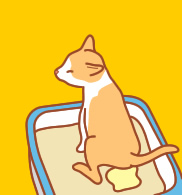

Having diarrhea or loose stools does not necessarily mean that you are sick. Some cats have diarrhea after drinking cow's milk. However, if acute diarrhea in a weak kitten or elderly cat worsens, it may die, so don't be discouraged and seek medical attention early. It is important to monitor the situation for temporary diarrhea or loose stools in an energetic, active, and appetizing adult cat. However, if it persists or if you have other symptoms such as bloody stools, vomiting, energy loss, or loss of appetite, see your veterinarian. In addition, it is essential to see a veterinarian if your dog loses weight due to chronic loose stools.
Acute diarrhea can be parasitic, bacterial, viral, or poisoning. In particular, kitten panleukopenia (vomiting, bloody stools, loss of appetite) is life-threatening, so immediate medical attention is required. In addition, if it is chronic, various diseases such as enteritis, intestinal obstruction, stomach or intestinal tumor, and pancreatitis are suspected. Also, watch the stool carefully, as worms may appear in the stool due to parasitic infections. We also recommend regular stool checks and deworming.
If you notice any of the following symptoms, see your veterinarian as soon as possible.
<Symptoms requiring medical examination>
・Continued diarrhea and loose stools
-Blood in some of the stool
- There are worms in the stool
・Repeating severe diarrhea ※Urgent
・Blood in stool *Urgent
・Vomiting due to diarrhea and feeling unwell *Urgent
・I have diarrhea and have lost weight *Urgent
Checkpoints for constipation
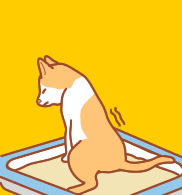

Constipation is a condition in which it is difficult to pass stools unless you forcefully strain at the time of defecation. If constipation persists, there is a possibility of illness. If you defecate even a little bit at a time, it may be temporary, so please keep an eye on it. However, if you have symptoms such as not having a bowel movement for two days or more despite taking meals, not having a bowel movement even though you are in a defecation posture, or accompanied by vomiting, you may have a disease of the large intestine, urinary or reproductive organs, or nervous system. It may be a disorder, metabolic/endocrine, trauma (pelvic fracture, hind limb abnormality).
Constipation can also occur if you are taking certain medications. Cats are especially prone to constipation due to megacolon. Even though there is a urge to defecate and you have a defecation style, the state of tenesmus that you do not defecate may not only be constipation but also dysuria.
The normal number of bowel movements is 1 to 3 times a day. And when the number of stools decreases, it's important to watch your cat carefully for other abnormalities. It is dangerous to self-judge and give an enema just because you are constipated. Please be sure to follow the instructions of your veterinarian, as urinary disorders may occur. Also, megacolon occurs frequently in cats. The cause is often unknown, but it is important to consult with a veterinarian because dietary therapy, drug therapy, and surgical treatment are required.
If you notice any of the following symptoms, see your veterinarian as soon as possible.
<Symptoms requiring medical examination>
・There are days when only a few hard stools come out
・The shape of the stool is getting thinner
- Blood in the stool
・Making a painful expression or voice when defecation
・Defecation does not come out even though you are in a position to defecate
- Constipation and vomiting
・Constipation and lack of activity
・No flights for more than 2 days ※Urgent
・My stomach is bloated *Urgent
・Not having a bowel movement and feeling exhausted *Urgent
Check points for polyuria and urine color
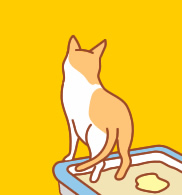

Cat urine can be determined by the litter of the litter, but it is difficult to tell, but in the case of solidified sand, the amount of urine should be determined by the size of the litter. If you have more than usual, you have a tendency to polyuria, and you may have polydipsia and polyuria. Also, if your urine is sticky, you may have diabetes. In addition, urine that looks reddish-brown, orange, or soy sauce is called hematuria, hemoglobinuria, and dark yellow is bilirubinuria, which may indicate a disease. In addition, if only a small amount of urine is produced despite taking the posture to urinate many times, frequent urination due to dysuria or a feeling of residual urine due to inflammation is suspected, so an early examination is desired.
If the urine is dark yellow, it may be bilirubinuria due to jaundice. Check not only the color of the urine, but also the conjunctiva and oral mucosa. If the color is yellowish, it is an urgent jaundice symptom. In this way, the color of your pet's urine can lead to the discovery of life-threatening diseases, so it is important to always know it. Also, be careful if the color of urine is strange and you take a posture to urinate many times, or if you have no energy or appetite, or if you are exhausted.
If you notice any of the following symptoms, see your veterinarian as soon as possible.
<Symptoms requiring medical examination>
・There is polydipsia and polyuria
- Polyuria and decreased appetite
・Urine is sticky
・Polyuria and vomiting ※Urgent
・I am suffering from dehydration ※Urgent
・Urine color is red or brown ※Urgent
・Urine color is orange or dark yellow ※Urgent
-blood in the urine
・The color of urine is strange and there is no energy ※Urgent
・Although I go to the toilet many times, I only urinate a little *Urgent
Checkpoints when urine does not come out
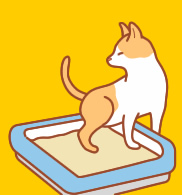

Although there are individual differences in the frequency of urination, it is important to see a doctor as soon as possible if you notice that you do not urinate at all, or that you do not come out much even though you go to the toilet many times. If your dog hasn't urinated for a whole day, go to the veterinarian as soon as possible. Failure to urinate for 3 days can lead to death from uremia.
Urine is produced by the kidneys, stored in the bladder, and excreted through the urethra. Difficulty urinating may indicate a disease such as a tumor or stone, and urethral obstruction is a strong suspicion, especially in male cats. In addition, females may take a posture to urinate all the time due to the feeling of residual urine due to cystitis. It is also important to note that acute renal failure may result in no urine production at all, and may progress to a life-threatening condition within a few days.
Feline urinary syndrome is thought to be caused by factors such as low water intake, reduced exercise due to obesity, dietary content, stress in the rearing environment, and seasonality. Cats tend to avoid dirty water and toilets, so please prepare toilets and tableware for at least the minimum number of pets so that they can always be used in a clean state. Males in particular are prone to urethral obstruction, which can lead to death if treatment is delayed.
If you notice any of the following symptoms, see your veterinarian as soon as possible.
<Symptoms requiring medical examination>
・I haven't urinated for a whole day ※Urgent
・Difficulty urinating and feeling tired *Urgent
・Difficulty urinating and vomiting ※Urgent
・Difficulty urinating, and no energy or appetite ※Urgent
・It is difficult to urinate, and it seems to be painful ※Urgent
9If you act like this, it's a sign of illness! Cat behavior to watch out for
Signs of illness can be seen not only in the physical condition of the cat, but also in the behavior of the cat. Here, we will explain what kind of disease symptoms each of the five cat behaviors you want to pay attention to.
Checkpoints when you cannot stand on your own or have cramps
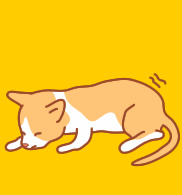

If the person is unconscious, unable to move or has a convulsion, consider this a life-threatening emergency. Please be careful as it may not recognize the owner and may bite. Stretch your neck so that you don't stop breathing, and protect your body with something soft, such as a blanket. Brain disease, metabolic disease, heart/circulatory/respiratory/kidney/liver disease, as well as infectious disease and drug addiction are possible, and urgent treatment is required. In addition, convulsions are suspected of poisoning with organic phosphorus, feline infectious peritonitis, brain disease, kidney/liver disease, vitamin B1 deficiency, and rabies. When you take your pet to the veterinary hospital, it is important to keep an eye on it and keep an eye on it.
If you notice any of the following symptoms, see your veterinarian as soon as possible.
<Symptoms requiring medical examination>
-Has convulsions
・Convulsions after eating something *Urgent
・Nursing mother cat has convulsions *Urgent
・The convulsion continues for more than a few minutes *Urgent
・The consciousness is faint and the posture is strange *Urgent
・You are tired and your eyeballs move strangely ※Urgent
・Lying down and breathing differently than usual *Urgent
・Unconscious and incontinent ※Urgent
・Several minutes have passed with fainting *Urgent
Checkpoints when you are not feeling well
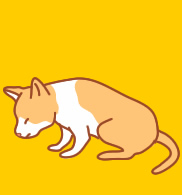

What points should I check to see if my cat is doing well? In particular, the following points should be checked.
<Points to check your health>
・Does he/she look tired easily?
・How are you?
・Do you dislike exercise?
・ Do you want to go out as usual?
・Do you move your body as usual?
Unlike dogs, cats don't go for walks regularly, so it's hard to notice changes in their motor skills. Reduced daily activities such as grooming, nail sharpening, and inability to tolerate sustained physical exertion such as no play; respiratory and circulatory diseases such as asthma and empyema; It may be a disease, an internal disorder such as kidney failure, anemia, etc. If you attribute your fatigue easily to old age, you may miss serious illnesses. Keep an eye on your pet and if you notice any symptoms, contact your veterinarian as soon as possible.
In addition, in the case of obesity, a burden is placed on the legs, and symptoms such as reluctance to exercise and fatigue easily appear. If you have any symptoms that you are concerned about and go see a veterinarian, it is important to diagnose whether the symptoms are acute or have progressed gradually, so keep a close eye on your cat on a daily basis. Please give me. From the age of 8 onwards, it is important to have your child undergo a health check-up at least once a year.
If you notice any of the following symptoms, see your veterinarian as soon as possible.
<Symptoms requiring medical examination>
- Dislikes exercise and coughs frequently
The tongue turns purple when exercising or getting excited
・It does not move and the color of the gums is white ※Urgent
-Fatigue, loss of appetite, and vomiting
・When you exercise or get excited, you faint *Urgent
Checkpoint when head is tilted


If your cat is alert, but its movements are somewhat awkward, it may indicate a nervous imbalance. If you can't walk in a straight line and bend over, or your head is tilted, you may have ataxia. The most common is vestibular ataxia, a disorder of the part of the inner ear that controls balance. In cats, it appears to occur regardless of age. In addition, the possibility of vision impairment, brain damage, poisoning, and infectious diseases are also possible.
The vestibule is the part of the inner ear that keeps the head, eyes, and trunk in the correct position relative to gravity. If there is a problem with the vestibule, the head may tilt in the direction of the problem or keep spinning. Causes include otitis externa secondary to otitis externa and idiopathic ones of unknown cause. If left untreated, the symptoms may progress. If such disorders are observed, such as the inability to carry out normal daily activities, it is essential to see a veterinarian.
If you notice any of the following symptoms, see your veterinarian as soon as possible.
<Symptoms requiring medical examination>
Unnatural gait and posture
・The head is always tilted *Urgent
・Walking in circles and unable to walk straight *Urgent
・Your movements are awkward and your eyeballs are trembling left and right or up and down *Urgent
・Awkward movement, loss of appetite, and vomiting *Urgent
walking checkpoint


・Are you having trouble walking?
・Does it look like you are covering your feet?
・Is there any signs of dragging your feet?
・Are you licking only the same place?
Cats that go out sometimes have strange ways of walking when they come home. In such cases, fractures and dislocations due to traffic accidents, falls, etc. are suspected. Also, in the case of uncastrated males, there is a high possibility of injuries due to fights. Since fractures, dislocations, abscesses, etc. are possible, observe which four legs are covered, whether there is bleeding or swelling, and whether the feet are on the ground. Please see a doctor.
Also, if you have a painful injury, such as a bone, joint, ligament, or muscle injury, be careful not to carelessly touch the affected area. Cats can become violent and make symptoms worse. Take your pet to a veterinary hospital in a safe condition that does not strain the affected area. Tell your veterinarian at the time of your examination if there is any reason why you have noticed any abnormalities.
If you notice any of the following symptoms, see your veterinarian as soon as possible.
<Symptoms requiring medical examination>
・I am covering my legs
・ Licking only the same place
・I am limp and have no appetite or energy ※Urgent
・Bleeding and swollen legs ※Urgent
・Do not put your feet down on the ground *Urgent
voice check point
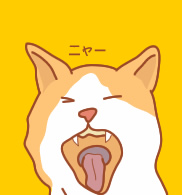

When a female cat meows in the middle of the night with a strange, resounding voice that sounds like she's trying to make a wish, she's probably in heat. In addition, it may be periodontal disease or stomatitis that emits a strange voice while eating. Periodontal disease and stomatitis in cats are often very painful and may make them scream. In addition, the voice may be hoarse in cases of feline infectious rhinotracheitis.
In addition, female cats generally go into estrus around 6 months, or 4 months at the earliest. After that, it is believed that there are about two estrus periods per year, but indoor female cats often have estrus all year round. If there is no mating, the female will go into heat many times at intervals of one month, and will repeat strange calls in the middle of the night. If your home environment is a nuisance to your neighbors, or if you can't responsibly keep a newborn kitten, consider contraception as it will reduce stress for your cat.
If you notice any of the following symptoms, see your veterinarian as soon as possible.
<Symptoms requiring medical examination>
・Makes strange noises while eating and doesn't like if you try to touch your mouth
An unvaccinated cat meowing hoarsely
10Make life with your cat more enjoyable with home health checks
In order to maintain the health of cats, we have explained the points to be confirmed and the types of diseases that can develop.
By regularly checking your health at home, you can reduce your worries about illness as much as possible and make life with your cat more enjoyable.
The content introduced in this article is just an example, and it does not guarantee health or confirm illness. Each cat's health is different. If you have even the slightest doubt, be sure to consult your veterinarian.
Dr. Yoshihisa Honda, Director of Myu Animal Hospital
· Osaka City Veterinary Association Board Member
· All Japan Veterinarian Cooperative Union Editorial Board
· Japan Veterinarian Hospital Welfare Association (JAHA) Chubu Japan District Representative Director
· Neobetz Corporation Director
Based on the idea that animals are healthy and can share nice days with their owners long for even one day, they provide the latest knowledge and techniques as veterinarians. Treatment of diseases, as well as various prevention and daily care daily are done at the same hospital. Neo Betts ER Sakai (evening animal care) also hits medical treatment. In addition, as an Osaka Municipal Veterinary Association's academic supervisor, we are implementing seminars for veterinarians, and we are carrying out animal welfare festival where citizens can participate every September and November. In addition, he is also involved in medical articles by Pepi as an editorial board of the All Japan Veterinary Society.
Mu-Animal Hospital
https://www.mew-ah.net/
Neobeticz Advanced animal medical care · Animal night emergency medical examination
https://www.neovets.com/
11
Frequently Asked QuestionsQ&A about poor health of cats
- What is the cause when the cat is not feeling well?
-
Reduced daily activities such as grooming, nail sharpening, and inability to tolerate constant physical exertion, such as no play, respiratory or circulatory disease such as asthma or empyema, bone or joint disease, kidney failure There is a possibility of visceral diseases such as, anemia, etc. Keep an eye on your pet and if you notice any symptoms, contact your veterinarian as soon as possible.
- What causes cats not to eat?
-
If your cat isn't feeling well and won't eat at all, it may be suffering from some disease. In that case, keep an eye on your pet for other symptoms and see a veterinarian as soon as possible. Also, if you change the contents of the diet suddenly, the cat's appetite may decrease. If your dog does not eat even though he is fine, you need to take into account his palatability and try to mix in the food he has been eating.
- What to do if your cat vomits
-
Shedding cats groom themselves frequently and swallow a lot of fur. It becomes a hair ball in the stomach and may be vomited, but this is not a disease. However, if you vomit something other than hairballs and have other symptoms, you need to be careful. If it continues, an examination at a veterinary hospital is essential.
- What is the point when checking the health condition of a cat's ears?
-
Check if there is any smell, if there is any dirt, if there are any scratches, if there is an itchy ear. If your cat's ears are healthy, regular cleaning is usually not necessary. However, if it smells, is dirty, or looks itchy, you may already have otitis externa caused by parasites, or an ear disease caused by bacteria or yeast (Malassezia).
- What should I do to keep my cat's teeth healthy?
-
If you get used to brushing your teeth from the time you are a kitten, you can prevent tartar from sticking to some extent. However, if your cat is already old and has a lot of tartar on its teeth, it is recommended to have it removed by a veterinarian. Observe your cat's eating habits on a daily basis, and if there are any changes such as reddened gums or the cat not letting its owner touch its mouth, please consult a veterinarian as soon as possible.
Special feature that you want to check together
-
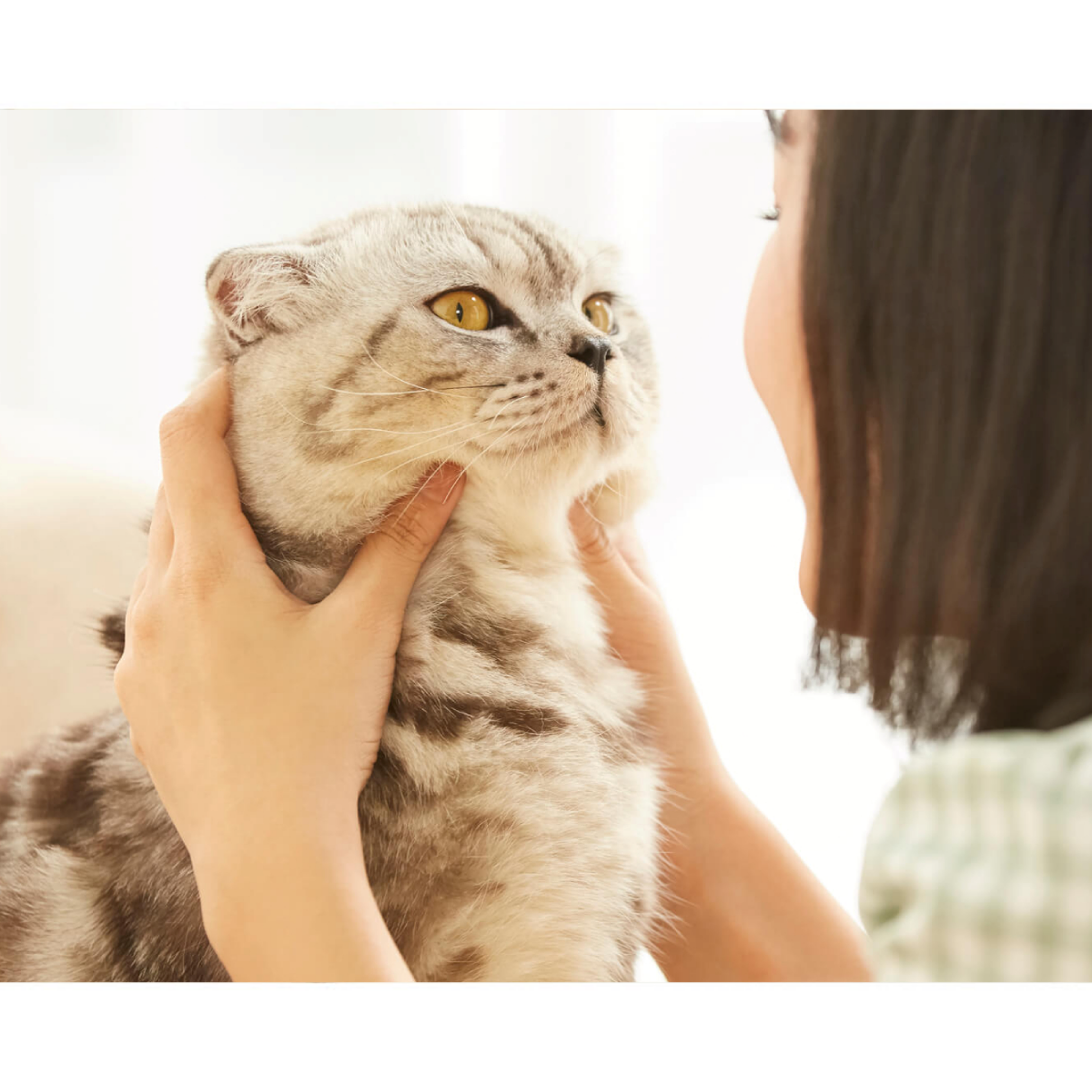 What is the correct way to raise a cat? Explanation of necessary advance preparations and mindset
What is the correct way to raise a cat? Explanation of necessary advance preparations and mindset -
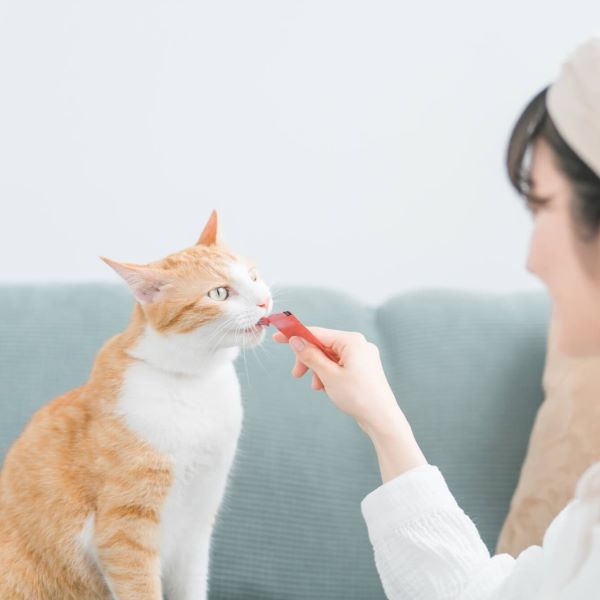 How should I train my cat? Explanation of basic items and precautions
How should I train my cat? Explanation of basic items and precautions -
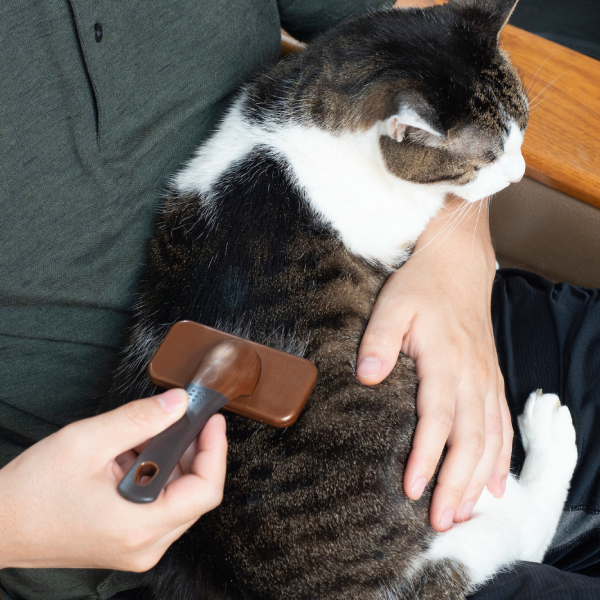 [Veterinarian supervision] What is the reason for cat hair loss? Explains how to deal with it and tips for cleaning the room
[Veterinarian supervision] What is the reason for cat hair loss? Explains how to deal with it and tips for cleaning the room -
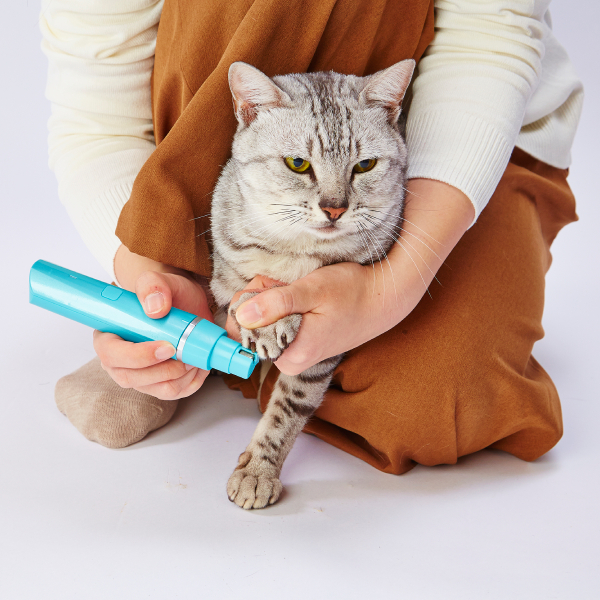 [Veterinarian supervision] How to cut a cat's nails? Introducing tips on how to cut nails
[Veterinarian supervision] How to cut a cat's nails? Introducing tips on how to cut nails
